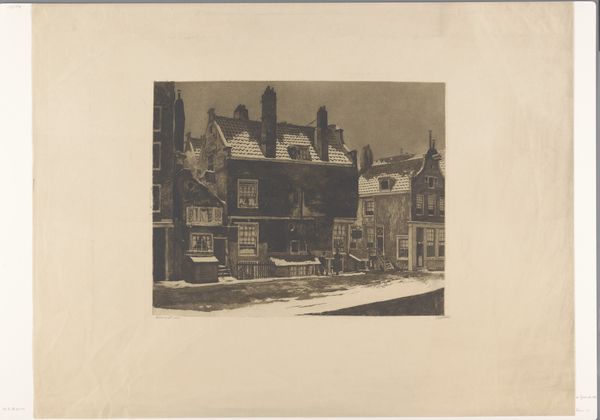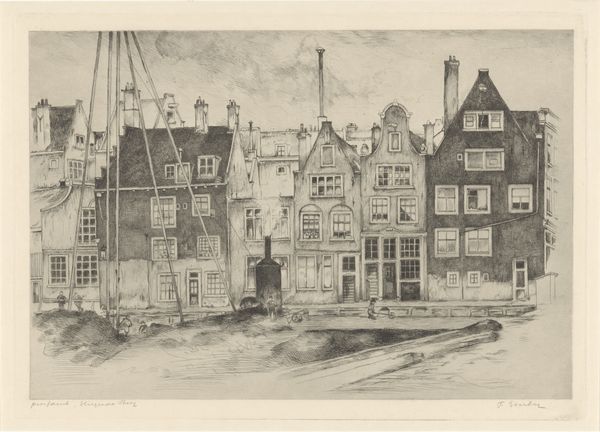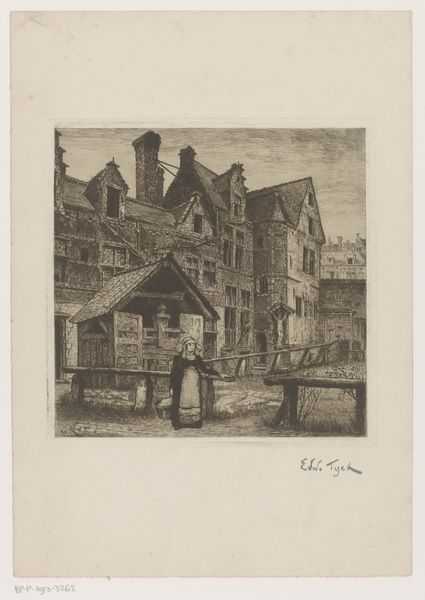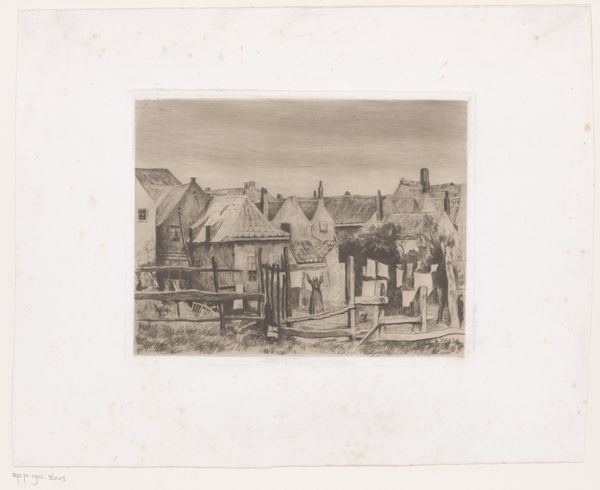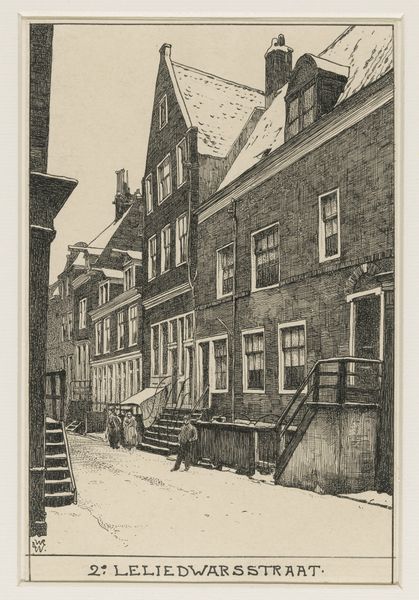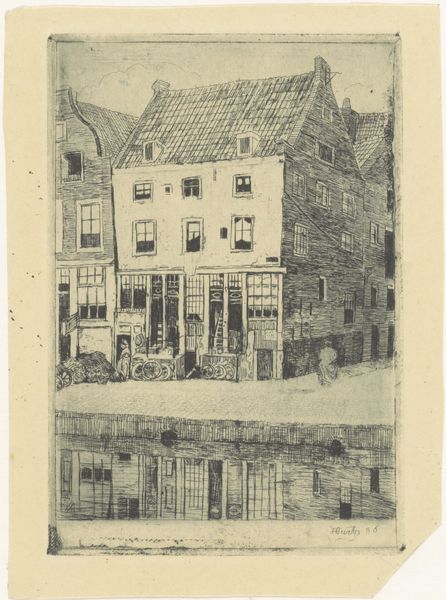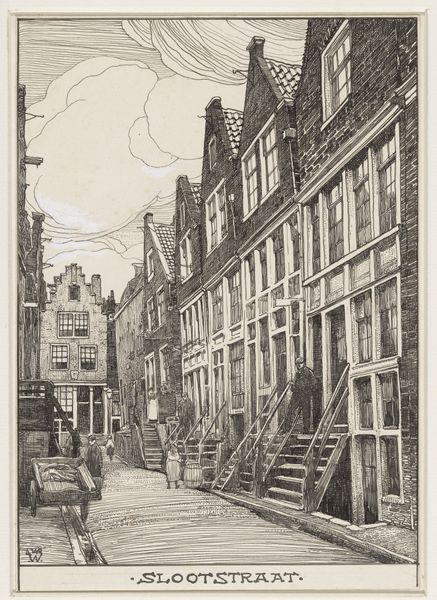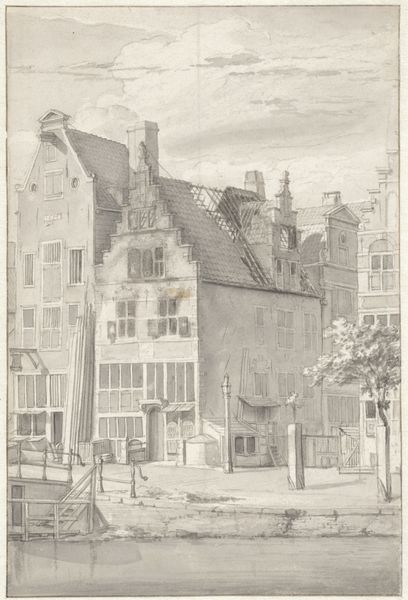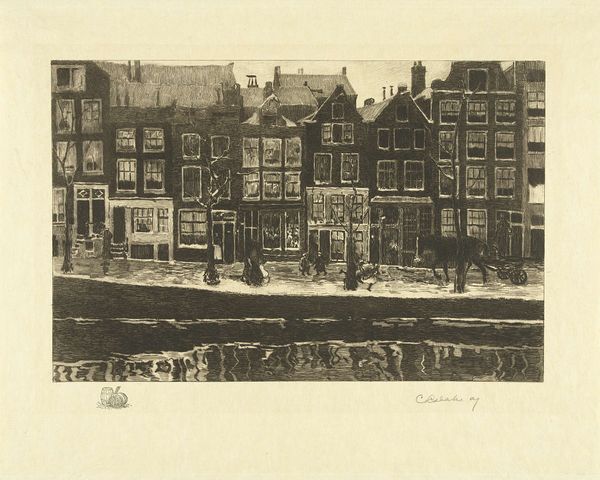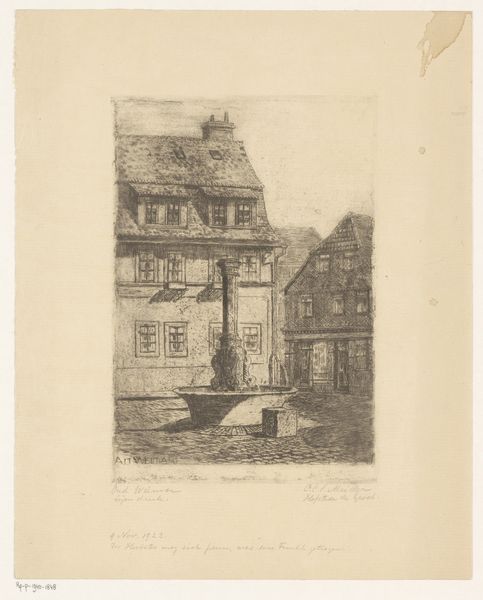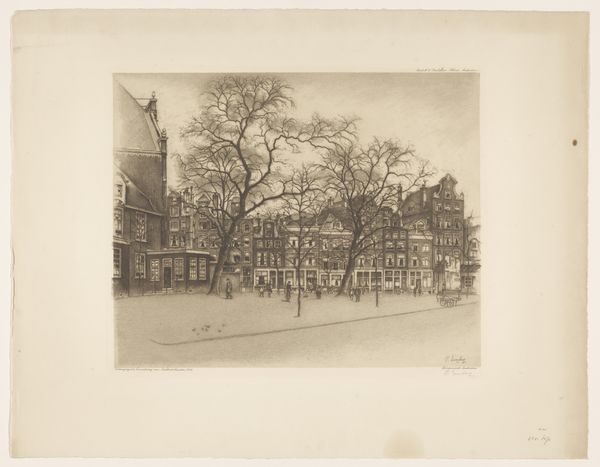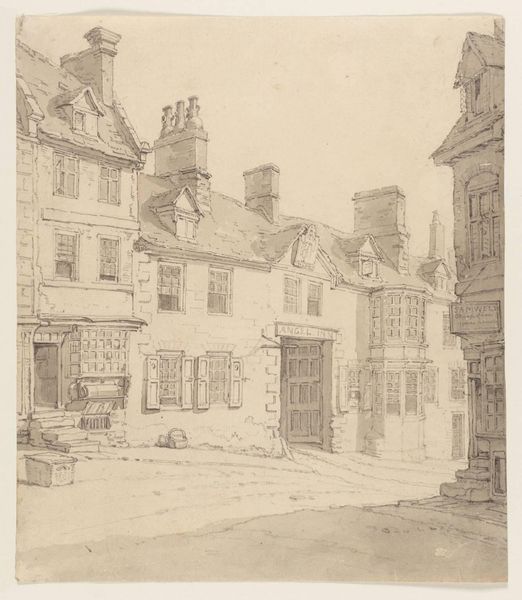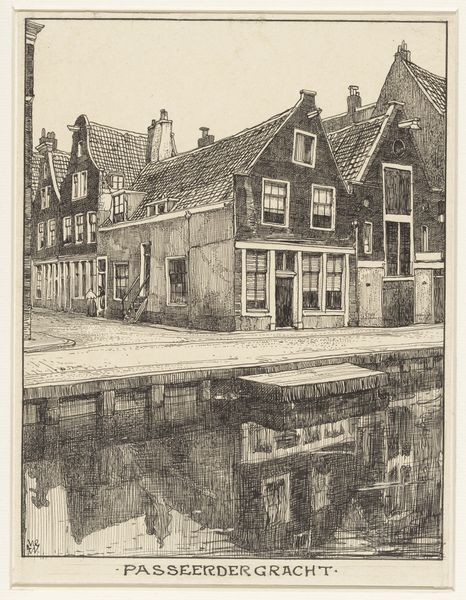
print, etching, photography
#
print photography
#
dutch-golden-age
# print
#
etching
#
photography
#
historical photography
#
cityscape
#
realism
Dimensions: height 402 mm, width 503 mm
Copyright: Rijks Museum: Open Domain
Editor: This is Willem Witsen's "Gezicht op de Krom Boomssloot in Amsterdam," created around 1907-1908. It's an etching, so a print, and it presents a rather somber cityscape. What jumps out to you about this piece? Curator: For me, the power lies in examining the *process* of its making. As an etching, its mass reproducibility challenges the idea of the "unique" artwork, placing value instead on the labour involved in creating the matrix from which it’s printed. Note the marks left by the artist: we see a web of lines, meticulously carved, suggesting an intimate understanding and relationship with the depicted cityscape. Editor: So you're focusing on how it was made, the marks, the matrix. Does the location matter? The street it depicts? Curator: Absolutely! Consider the social context: early 20th-century Amsterdam, a rapidly changing urban environment. Witsen chose an etching, a traditionally "lower" art form often associated with printmaking and reproductions. This suggests a deliberate commentary on the democratization of art viewing, accessible to many. Were etchings generally available? Editor: I think so, probably more affordable than a unique painting... it definitely has that accessible feel. Curator: Precisely! The “realism” here reflects the industrial labor that allows widespread viewing opportunities for diverse communities. That matters, I think. What have you gained after we've looked at this from the viewpoint of material and process? Editor: I usually just think about what an artwork represents. Now, considering the material process, I realize that Witsen probably wants me to see both the scene *and* consider the wider social dynamics around art consumption during the early 20th century!
Comments
No comments
Be the first to comment and join the conversation on the ultimate creative platform.
